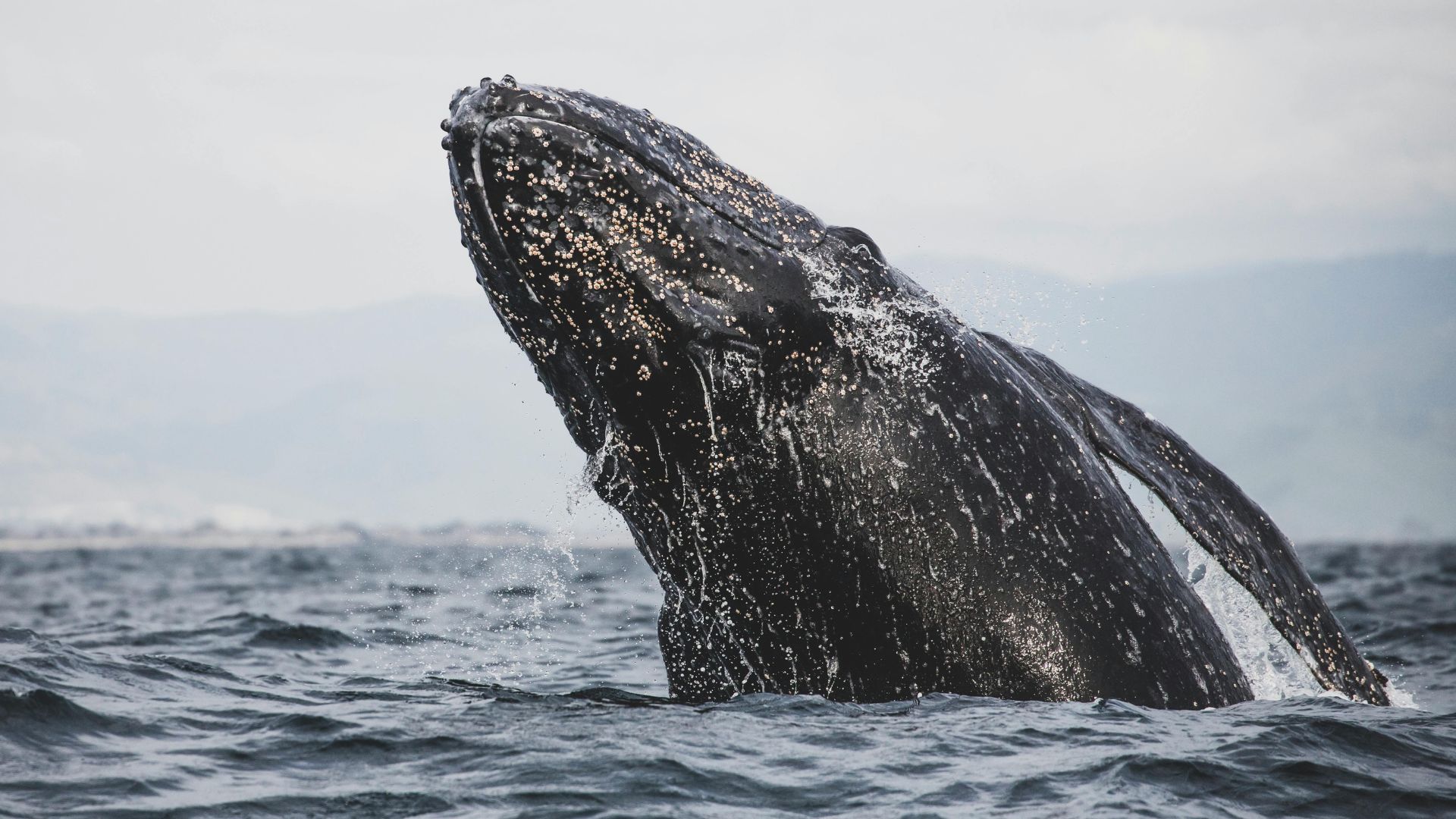Originally published on August 28, 2023, this article has been updated on October 17, 2023 to reflect the latest research and statistics. Our editorial team has ensured you’re viewing the most current data on this topic. Need help or have a question? Email us.
If you’ve ever wanted to feel like an ant, stand beside a blue whale. The kicker is you’d probably remain safe and sound swimming right next to one. These gentle, massive mammals, once almost extinct due to the unscrupulous practices of whalers, never fail to amaze!
We decided to share blue whale facts so you could see just how incredible they are. The more conversations we have about them, the safer they’ll be since education is paramount to knowing how to protect them.
We want to share facts with you about the intricacies of their size, families, and feeding habits. You’ll learn how scientists/researchers have discovered astounding details and whether blue whales are endangered or not.
Did you know you can hear a blue whale’s songs from miles away? Or that the heart of one blue whale was recorded to have weighed nearly 1,500 lbs? Follow us on an adventure that will astound and surprise you. Let’s sail into the deep blue ocean together.
Top 12 Most Astounding Facts About Blue Whale
- Blue whales are the largest animals ever to live on earth
- Blue whales vary in length from 80 to 100 feet
- On average, blue whales weigh roughly 100 to 150 tons
- Blue whale calves are born weighing up to 5,000 to 6,000 lbs
- Blue whales need nearly 12,000 pounds of krill per day
- Except for the Arctic, blue whales inhabit all the world’s oceans
- The gestation period of blue whale is 10 to 12 months
- Blue whale heart weighs approximately 400 pounds
- Interestingly, blue whales are the loudest animals on the planet
- The average lifespan of a blue whale is 80 to 90 years
- There are 10,000 to 25,000 blue whales left in the word
- According to IUCN, they’ve been categorized as ‘endangered’
Scientific Classification of Blue Whale
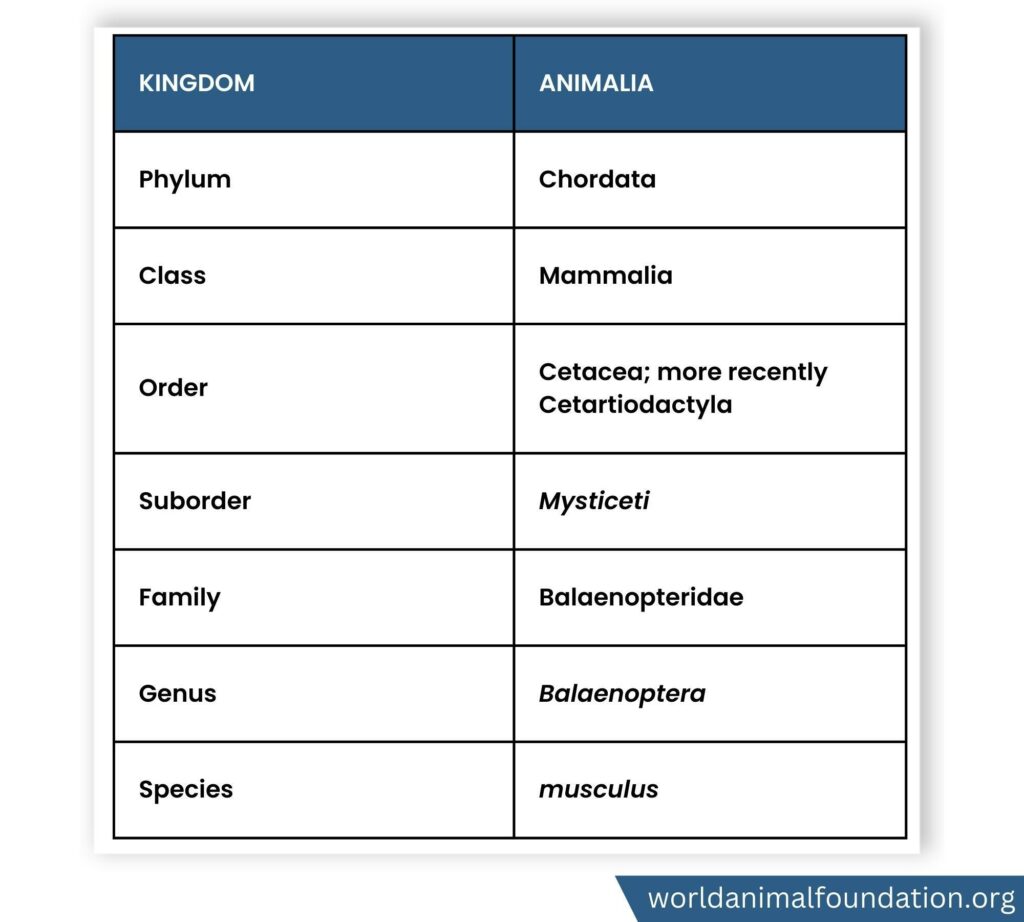
Blue Whale Facts
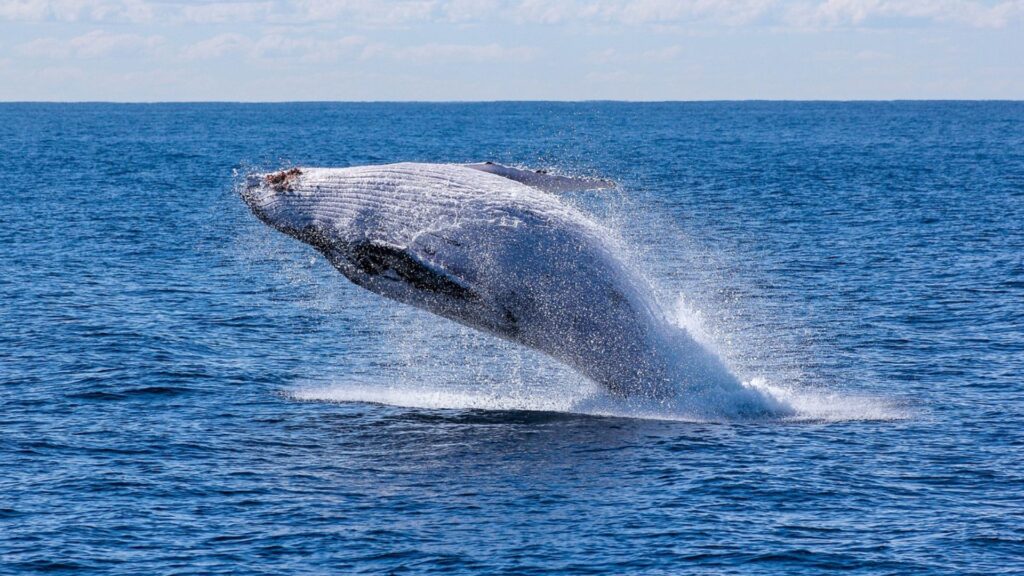
Blue whales had been around in large numbers (350,000) until the late 1800s when exploding harpoon guns were invented. The atrocities that followed only increased into the 1900s when commercial fishermen took advantage of the massive beings. Man almost obliterated the species completely. It’s estimated that 99% of blue whale populations were killed.
Today, thank goodness we have them around to explore how to make sure we’ll never lose them.
So, let’s begin studying the largest creature on the planet.
Blue Whale Appearance
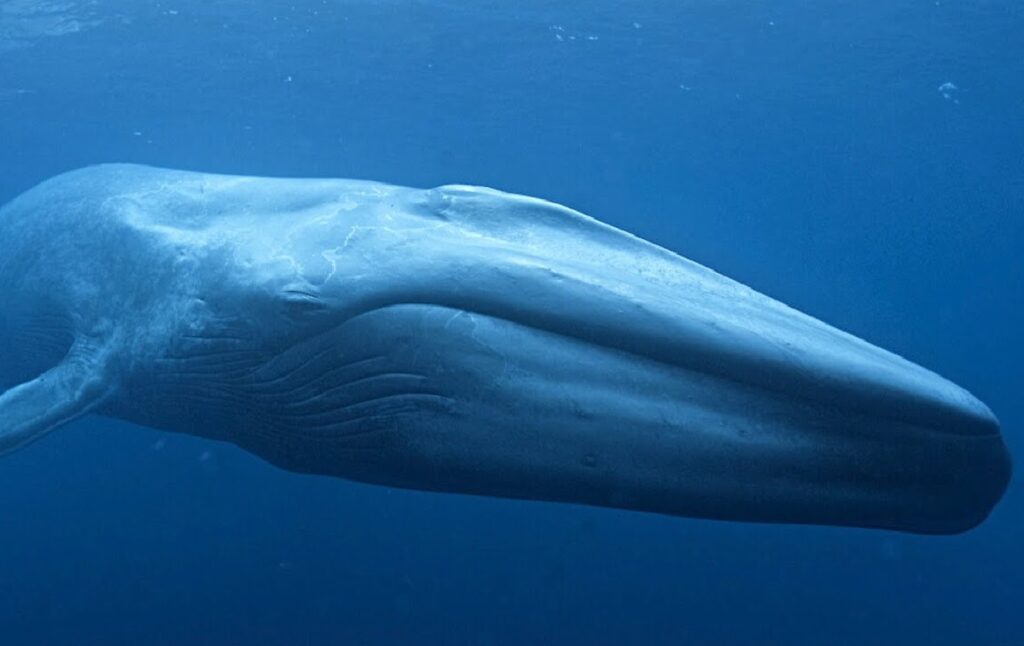
Blue Whales Are the Largest Animals Ever To Live on Earth. (WWF)
“Ever” being the operative word. These whales are approximately the size of 30 (thirty) Tyrannosaurus Rexes and 33 elephants. Compared to a human being? You could line up over 2,600 men to equal the size of the incredible beauty.
Each Blue Whale Has a Unique Surface Marking. (Aquarium of Pacific)
That they are essentially “fingerprints” is a goldmine to researchers since it allows them to track individuals. Just like with humpback whales, researchers use photo identification to identify the pigmentation patterns easily seen on their backs. They’re so unique; in fact, these whales make it easier to see who’s who and track migration routes.
Blue Whales Are Baleen Whales With Fringed Plates Called “Baleen” on Their Upper Jaws. (National Geographic)
Blue whales are the baleen whales. These whales have no need for teeth due to their diets. Whalebone, called “baleen,” is made of keratin, which is what our fingernails and hair are made of. The fringes filter small fish and zooplankton.
Blue Whale Diet
Blue Whales Need Nearly 12,000 Pounds of Krill per Day for Sustenance. (Marine Mammal Center)
Never on a diet, blue whales feed on krill (crustaceans similar to shrimp) during the summer months in the Channel Islands, Monterey Bay, and the Farallon Islands. They’re ingested by the thousands.
Blue Whale Speed
Blue Whales Cruise at 5 Mph and Can Hit 20 Mph When Needed. (Live Science)
This speed by such a humongous mammal needs excessive force, so the blue whale uses its caudal peduncle, which supports the tail fin. They wave their flukes (tails) to accelerate.
Is Blue Whale a Mammal?
Blue whales are mammals. They give live birth, nurse their young with milk, breathe air through blowholes, and are warm-blooded. Despite their hairlessness, they have hair follicles during their embryonic stage and possess mammary glands.
Similar to a Human Nose, Blue Whales Have a Blowhole To Breathe. (Whales.org)
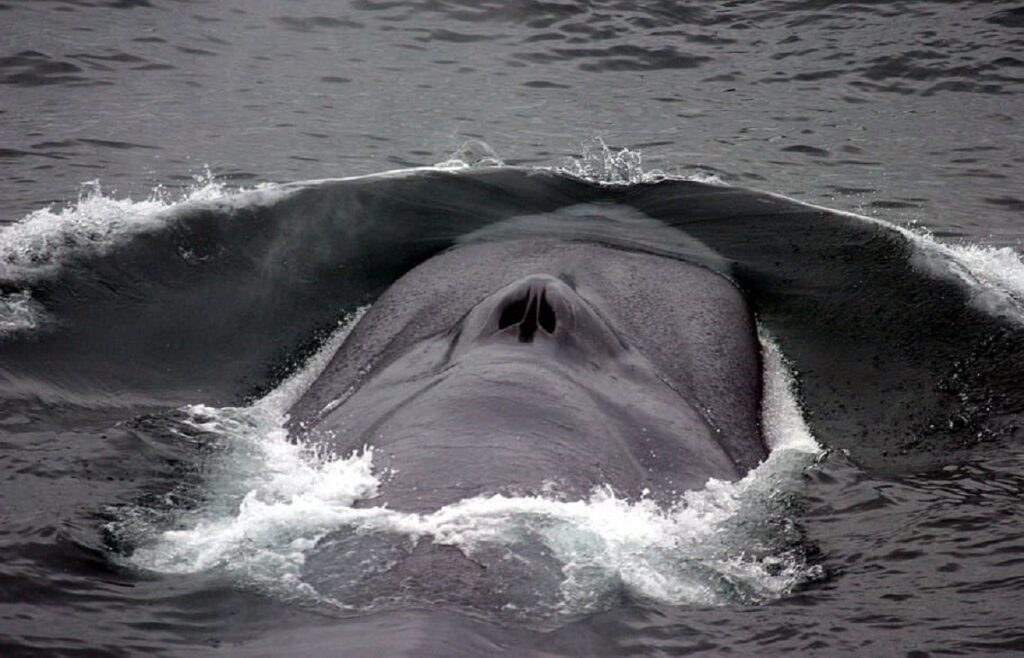
Blue whales breathe air just like us. They don’t have gills, so they cannot breathe underwater. They take in oxygen through their blowholes on top of their heads.
The Gestation Period of Blue Whales Is 10 to 12 Months. (NOAA Fisheries)
(I believe I hear a collective “Whew” from human mothers everywhere.) Weaning appears to happen on the way to summer feeding areas. The time between births is probably 2-3 years. The age of sexual maturity is thought to be 5 to 15 years.
Most reproductive activity, including mating and births, takes place during the winter.
Blue Whale Calf Is Nurtured by Its Mother. (North American Nature)
Mother whales have mammary slits with inverted nipples. Young calves dive below the mother, and when they nudge the slits, the nipple is released. The “mom” then lifts the calf to breathe at the surface.
Baleen Whales Migrate Annually Between Cold-Water Feeding and Warm-Water Breeding Grounds. (SPREP.org)
Some blue whale populations migrate up to 10,000 miles roundtrip. (Comparable to around two US cross-country roundtrips.) They feed in the abundant waters of the polar regions and mate and give birth in warmer waters.
Threats to Blue Whales
Once, Blue Whales Were Hunted for Whale Oil. (NRDC)
Whales are hunted for their whale oil and body parts:
- Oil
- Blubber
- Cartilage
- Meat
These are used in medicines and health supplements, in dog food, and for human diets.
Ship Strikes Are a Threat to Blue Whales. (Science.org)
Not only are physical strikes a particular threat, but ship strikes pose a threat as well. Ship-sourced air pollution (linked to climate change, which whales inhale) includes:
- Carbon dioxide (CO2)
- Nitrogen oxide (NOx)
- Sulfur oxide (SOx)
- Particulate matter
Not to mention ocean pollution (plastic, chemicals, etc.) which has created 500 dead zones where life cannot even exist.
According to Biological Diversity, other threats include:
- Entanglement in fishing gear
- Reduced zooplankton production due to habitat degradation
- Disturbance from low-frequency noise
Blue Whale Size
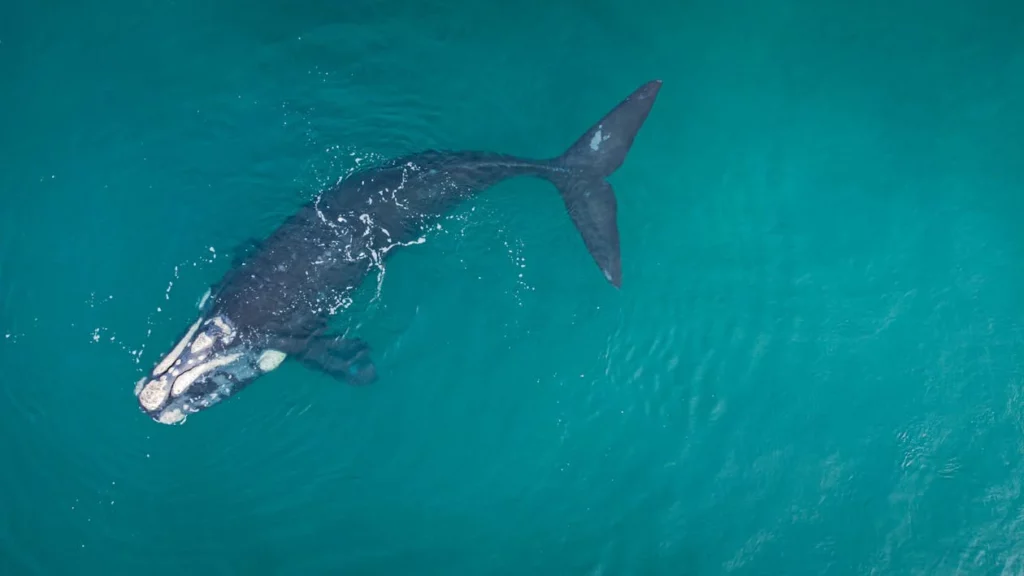
Blue Whales Are Enormous Creatures, Typically Varying in Length From 80 to 100 Feet. (Scientific American)
They largely have the ocean to thank for that. The ocean’s buoyancy allows marine mammals to continuously grow. Since large land mammals like elephants can only support so much weight, their size is limited.
The Longest Recorded Blue Whale Was a Female That Measured 110 Feet and 17 Inches. (Americanoceans.org)
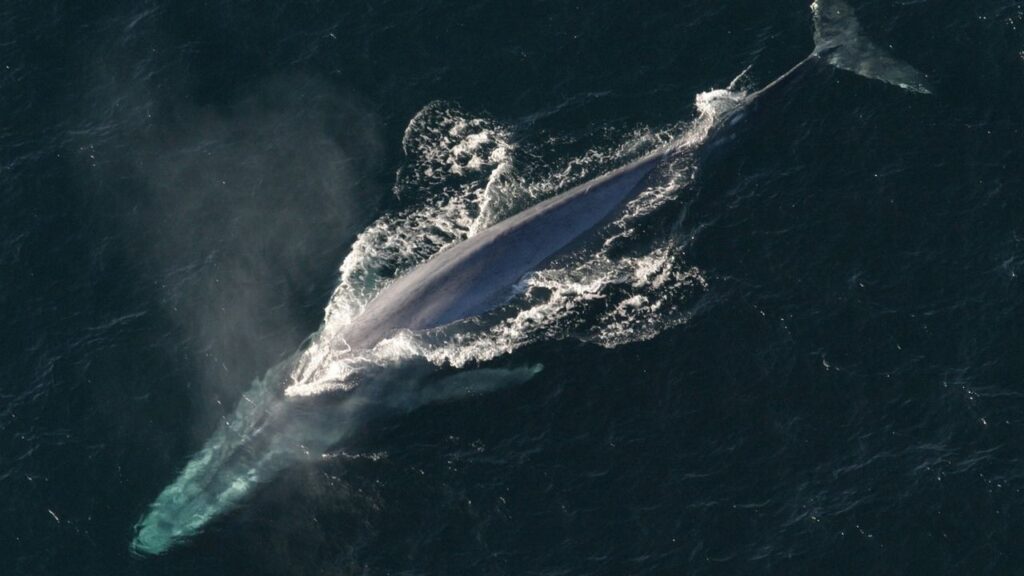
This event was recorded in 1909 and was found in the South Atlantic. They failed to weigh the whale, but its length was noted in the Guinness World Records as the world’s longest mammal.
On Average, Blue Whales Weigh Between 200,000 to 300,000 Lbs, Roughly 100 to 150 Tons. (Marine Mammal Center)
Typically, blue whales weigh around 100 to 150 tons (200,000 to 300,000 Lbs). Military aircraft, trains, and a Boeing 757 are on the list of weighing 100 tons. Kind of puts it in perspective.
Size of Blue Whale Calf
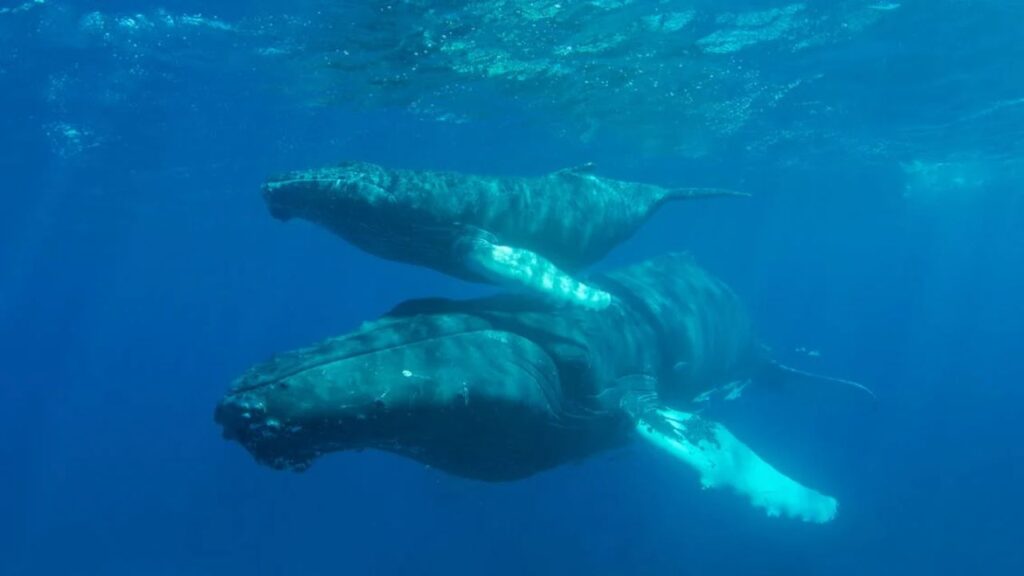
Blue Whale Calves Are Born Weighing About Up to 5,000 to 6,000 Lbs and Measuring Around 23 Feet in Length. (NPS.gov)
At a rate of up to ten pounds an hour(!), calves grow at an astronomical rate. It must be all the fat-filled milk, over 50 gallons a day, that helps them.
Where Do Blue Whales Live
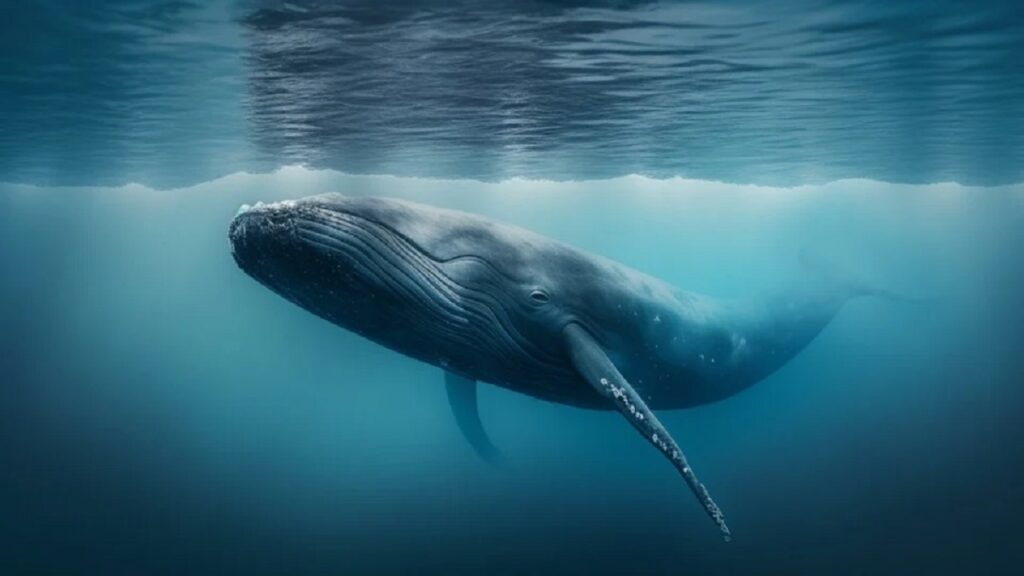
Except for the Arctic, Blue Whales Inhabit All of the World’s Oceans. (NOAA Fisheries)
Those waters remain covered with ice for most of the year so that nixes the appearance of these oxygen-breathing mammals. Otherwise, these gentle giants can be seen globally.
Antarctic Blue Whales Inhabit Icy, High-Latitude Waters Below the Antarctic Convergence. (NOAA Fisheries)
And to get specific, others live in the:
- North Atlantic Ocean
- Along the West Coast of the US
- Northern Indian Ocean
- South Pacific Ocean
Blue Whale Population
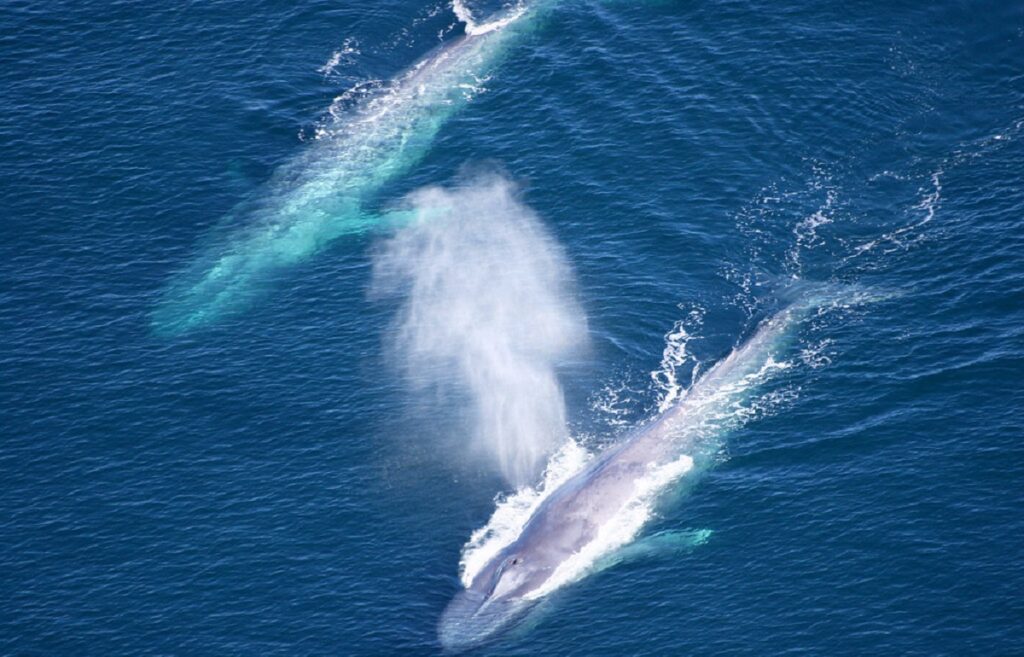
There Are 10,000 to 25,000 Blue Whales Left in the World. (WWF)
When harpoon cannons were invented, whalers converged and slaughtered the blue whale to the point of intervention. In 1931, almost 30,000 of them were killed. The International Whaling Commission stepped in and declared them protected throughout the world by 1966. Today, only 10,000 to 25,000 blue whales are left.
Blue Whale Population Is Much Higher in the Southern Hemisphere. (Biological Diversity)
- Southern Hemisphere – 5,000-10,000 blue whales
- Northern Hemisphere – 3,000-4,000
Off the California Coast, There Exists a Population of Roughly 2,000 Blue Whales As of April 2023. (University of California)
The small number is partly due to a major foe – container ships. Almost 80 endangered whales, including the blue whale, wash up on CA shores yearly.
Blue Whale Lifespan
The Average Lifespan of a Blue Whale Is 80 to 90 Years. (NOAA Fisheries)
I’ll start by saying that scientists know little about the lifespan of a blue whale. Some have lived shorter, and those that have lived longer lives. According to NOAA Fisheries, the age of sexual maturity is thought to be 5 to 15 years.
Scientists Analyze Earwax Layers To Estimate the Approximate Age of Blue Whales. (Smithsonian Magazine)
Other areas, like pollution, are also studied via earwax. A blue whale’s gland secretes oil into the ear canal that hardens and accumulates into a plug. It can be up to ten inches long and is measured in layers.
The Oldest Blue Whale Had a Lifespan of 110 Years. (National Geographic)
The oldest blue whale reached 110 years. Left to their own devices, read, leave them alone whalers, the lifespan of blue whales is affected by:
- Their diets (health of their food)
- Food supply shortages
- Mental health
- Physical health
- Orca whale attacks
- Other age-affecting factors
Blue Whale’s Heart
Blue Whale Has the Largest Heart in the Animal Kingdom, Weighing Approximately 400 Pounds. (CSHWhalingmuseum)
As you can see from the weight of the heart in the introduction, it can greatly vary depending on what has been reported/recorded. Either way, they’re huge.
Blue Whale Predators
Orcas Are the Only Predators of Blue Whales. (NPR)
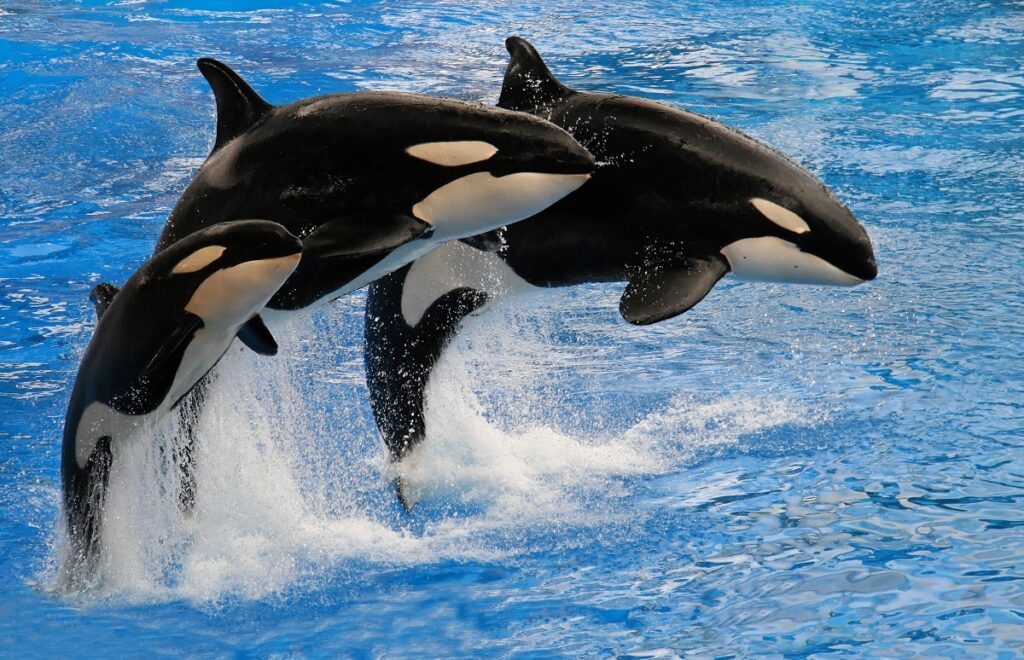
Orcas hunt adult and calf blue whales. Orcas will hunt in a pod and bite pieces of the whale until it is incapacitated.
While Adult Blue Whales Are Seldom Targeted, Killer Whales Occasionally Hunt Young Blue Whale Calves. (Baleines En Direct)
This is one of the reasons why mother blue whales are so protective of their calves. Mothers and calves swim quite close to each other.
Blue Whale Conservation Status
According to the IUCN, They’ve Been Categorized As ‘Endangered.’ (IUCN)
Blue Whale Balaenoptera musculus has most recently been assessed for The IUCN Red List of Threatened Species in 2018. Balaenoptera musculus is listed as Endangered… – the International Union for Conservation of Nature (IUCN)
Antarctic Blue Whales Are ‘Critically Endangered.’ (IUCN)
Antarctic Blue Whale Balaenoptera musculus ssp. intermedia has most recently been assessed for The IUCN Red List of Threatened Species in 2018. Balaenoptera musculus ssp. intermedia is listed as Critically Endangered… – IUCN
Note: The previous two facts are separate populations.
Fun Facts About Blue Whales
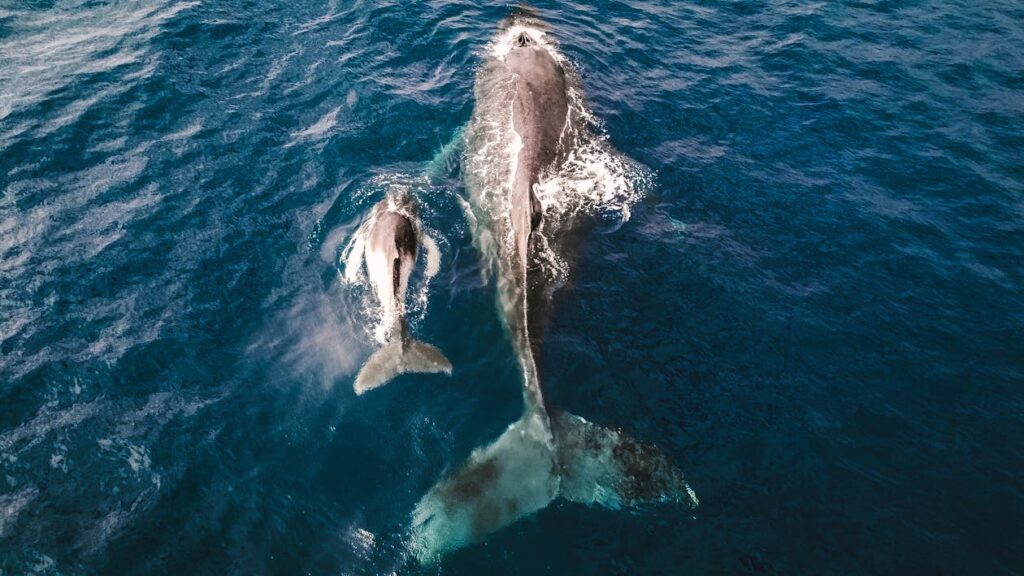
Blue Whale’s Tongue Can Weigh As Much as an Elephant. (National Geographic)
The enormity of these fabulous mammals is mind-blowing. For them to be so gentle is miraculous.
Interestingly, Blue Whales Are the Loudest Animals on the Planet. (WWF)
Their sounds, rhythmic low-frequency pulses, have registered to be up to 188 decibels, which is louder than a jet engine.
Blue Whales Can Communicate With Each Other From Distances As Far as 1,000 Miles. (National Geographic)
Humans aren’t even able to hear the lowest frequencies of their songs. Plus, scientists think they also use their vocalizations to sonar-navigate the ocean depths.
At the Start of the 20th Century, the Blue Whale Population Had Faced a Severe Decline. (NOAA Fisheries)
Illegal whaling activities are happening to this day. Thankfully, there are ardent whale advocates who make it their life’s work to ensure the existence of the blue whale. Populations of blue whales appear to be recovering.
Beneath the Water, Blue Whales Have a True Blue Color, and on the Surface, a Mottled Gray-Blue Color Appears. (National Geographic)
And their bellies are yellowish from the (millions of) microorganisms that attach to their skin. Their colors also depend on the way the sun’s rays bounce off of them.
Blue Whales Are Called ‘Sulfur Bottom’ Whales. (The Marine Mammal Center)
That yellowish color on their bellies? It’s due to the cold water diatoms that adhere to their skin. This has given the blue whale the nickname “sulfur bottom.”
Blue Whales Rest by Sleeping Half Their Brain at a Time To Prevent Drowning. (Whale Scientist)
These whales don’t have an unconscious breathing system. They still breathe at the surface since cetaceans are voluntary breathers.
Blue Whales Carry a Quarter of Their Body Weight As Blubber, Providing Protection and Insulation. (Smithsonian Ocean)
Since cetaceans have insulating fat, they are often born with minimal hair, yes, hair they lose as they age.) They have greatly evolved to live in their deep-sea home.
Blue Whale Facts for Kids
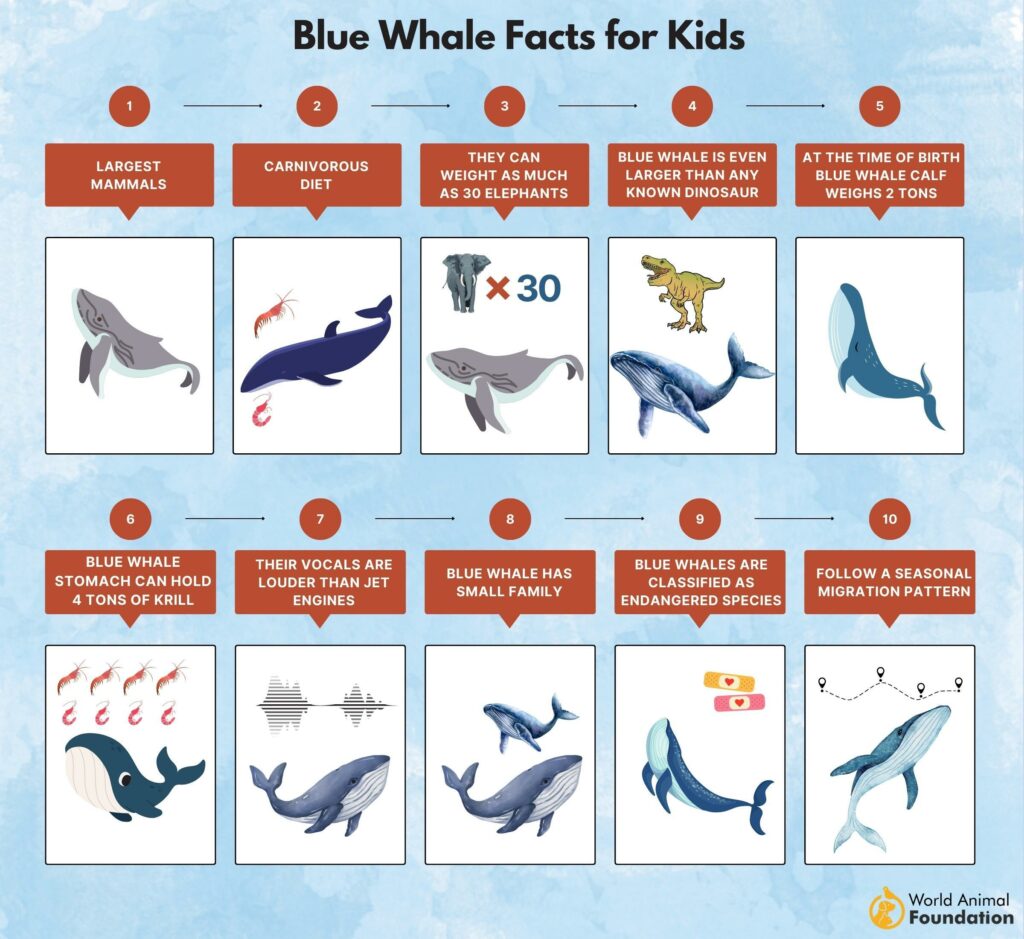
- Although blue whales are carnivores, they usually only eat very small fish called “krill.” The amount of krill blue whales’ stomachs can hold is four tons!
- They are the largest mammals to ever be on Earth and can weigh as much as 30 elephants. The pygmy blue whale, a subspecies of the blue whale, is smaller in size but still holds the title of the largest animal on Earth.
- They may be humongous, but their families are small, usually 3 or 4 whales, and they take special care of each other.
FAQs
Is the Blue Whale the Largest Animal Ever?
Yes, the blue whale is and always has been the largest mammal on Earth.
How Much Does a Blue Whale Weigh?
They weigh between 200,000-300,000 lbs, roughly 100 to 150 tons.
How Long Are Blue Whales?
Blue whales are from 80-100 feet in length.
Why Are Blue Whales Endangered?
Although whaling started before the 1900s, that century saw the rapid rise of commercial whaling, which almost wiped out the blue whale population. They are listed as “endangered” and “critically endangered” on the IUCN red list, with their numbers increasing.
How Many Blue Whales Are There?
There are 10,000-25,000 blue whales left in the world today. (2023)
How Much Does a Baby Blue Whale Weigh?
Blue whale calves are born weighing up to 6,000 lbs.
Conclusion
If you haven’t fallen in love with blue whales yet, you may need to check yourself. These creatures give humans a reality check when it comes to size, ways of communicating, and longevity despite the odds.
Let’s educate others about their plight, sign petitions, and learn as much as we can about the blue whale. We may be their biggest predator, but we’re also their only hope.


